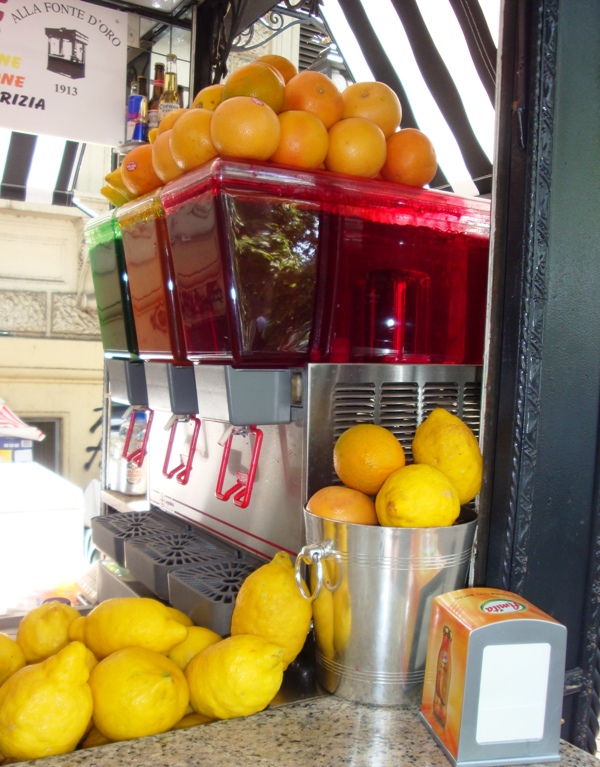
So many people I speak with -- clients, students, friends -- tell me they're afraid of cooking fish. Everyone seems to think that because a fillet of white fish is relatively delicate, it's a complicated task to prepare. Not so. A white, flaky fish fillet (and not canned tuna!) is, to my mind, the chicken of the sea: everybody likes it, and you can almost always find some variety of white fish where you purchase fresh seafood, filleted and ready to be cooked and eaten. The local catch varies from place to place, of course, and in many cultures, fish is usually sold whole. This is not to save the fishmonger the work of filleting the fish, but more for the discerning customer who wants to judge the freshness of the fish by checking to see that its eyes are clear, and that the fish's gills are a rosy red. But in the U.S., whole fish can be hard to come by. Seafood shops resemble sushi counters, with a variety of already-filleted specimens arranged on ice for the customer to select. Here, since you can't look the fish in the eyes, it becomes important that you trust that your fishmonger is getting in a constant supply of fresh fish.
But regardless of where you are on the globe, how you buy your fish, or what your local catch may be, you can always whip up a healthy, fresh fish meal in about 30 minutes. Recently, I found a gorgeous fillet of locally-caught wild blackfish. I wanted a light, healthy meal for a warm September evening. I often plan my plates using color as a guide -- a surefire way to pair foods containing a variety of vitamins and minerals -- so here I accompanied the fish fillet with diced oven roasted sweet potato and fresh snap peas. The result is a dinner plate filled with a riot of eye-catching color, and great flavor. Since it's easy to prepare a pan sauce after cooking the fillet, I decided to make use of a fresh lime and some sauvignon blanc I had on hand.
This recipe is for one; it can easily be multiplied for any number of guests you may have.
You'll need:
*Fillet of white flaky fish: any fresh catch will do, from sea bass to snapper to flounder and anything in between. 6-8 ounces per serving.
*Sweet potato or yam
*Handful of snap peas
*1 lime or lemon
*1/4 cup crisp white wine
*dash of white balsamic or rice wine vinegar
*good quality olive oil
*pat of butter
*salt and pepper
*Sriracha sauce (if you like a bit of a kick)

- Preheat an oven to 350 degrees farenheit/175 celsius. Scrub a sweet potato or yam clean under running water. I left the skin on. You can peel it if you like. Cut the potato into 1/2 inch dice, sprinke with salt and pepper, and toss with a dash of good quality olive oil. Arrange on a baking sheet and bake, tossing occasionally, for about 30 minutes, until the pieces are cooked through and lightly browned.

- In the meantime, bring a small pot of water to boil. Clean the snap peas (a handful per person) by pulling off the stringy membrane on the flat side of the pod. When the water is boiling, add a healthy pinch of salt. Toss the snap peas into the water and cook for 2-3 minutes. Drain the snap peas and dump them immediately into ice water to stop the cooking. Once completely cooled, drain.

- Heat a nonstick saute pan over medium-high heat. Drizzle a glug of good quality olive oil in the pan. Heat until it shimmers a bit and tilt the pan so the whole surface is covered in the oil. Sprinkle the dry surface of the fish fillet with salt and pepper, and place skin side up in the pan. Do not touch the fillet for at least 3 minutes. This is important: when cooking delicate white fish, patience is a virtue!

Sprinkle the skin side with salt and pepper, and shake the pan a bit -- when the first side is done cooking, the fillet should shake free from the surface of the pan. With a fish spatula, gently flip the fillet. Turn the heat down to medium. Continue cooking another 3 minutes until the fish is cooked through. Remove from pan and put on a plate.

- With the flame still on, cut a lime or lemon in half and squeeze the juice directly into the pan. Add 1/4 cup crisp white wine (per serving), and a dash of white balsamic vinegar. Turn the heat up to high and reduce the liquid by 2/3. When it's been reduced, turn the heat down to medium-low. add a pinch of salt and a tablespoon or two of butter, gently swirling the pan to melt but the butter, but don't allow the sauce to bubble.

- In the meantime, take the potatoes from the oven, and serve as is or toss with a squirt of Sriracha sauce (sweet potatoes are a great foil for a piquant sauce and can stand up to the heat). Plate the potatoes and place the fish fillet on top.
- If the sauce is a little thick, add a touch of warm water to the pan and swirl to blend. Taste and adjust for salt. Drizzle the sauce over and around the fish fillet.
- Turn the heat up on the pan, toss the snap peas in, and warm through. This will also coat the peas with the remaining pan sauce. When they're warm, put the snap peas on the plate alongside the fish and potatoes.

- Serve immediately...and pour yourself a glass of that crisp white wine. Enjoy!











































































































